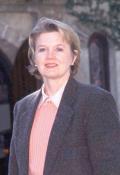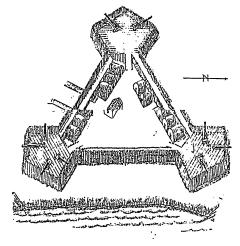Archaeologist Uncovers Early Fort In St. Augustine
University of Florida archaeologists believe they have found the fort that protected the first successful European colony in the United States more than four centuries ago.

|
| photo by: Ray Carson |
| Kathleen Deagan |
A team led by UF archaeologist Kathleen Deagan has uncovered evidence of an early fort of Pedro Menendez de Aviles, who established a colonial toehold in the United States in St. Augustine in 1565.
``This fort is important because it gives us clues about this very first European colony in the United States,'' Deagan said. ``Now we can understand the ways in which these first colonists adapted, and the degree to which they kept Spanish traits, adopted Indian ones or invented new ways to live.''
Researchers have been searching for the Menendez forts for more than 60 years, with the first major archaeological work done in the 1930s.
``St. Augustine had nine wooden forts before the present Castillo de San Marcos was built and none of these forts have ever been found until now,'' Deagan said. ``We think it was probably part of Menendez' original campsite, which would make it one of the first three forts.''
Tantalizing clues and occasional random finds raised archaeologists'
hopes over the years, but it was not until a series of discoveries in the 1990s
led to the fort's identification this fall, she said.

Between 1986 and 1991, Deagan and her team found evidence that the southeast corner of the Fountain of Youth Park was Menendez' 1565 original campsite rather than a Timucuan Indian town as they had originally thought.
Two years later, while excavating a short distance away from the park on the Catholic Church's shrine of Nuestra Señora de la Leche, Deagan's team uncovered a moat filled with only 16th century material. Coincidentally, new information discovered in Spanish archives by Eugene Lyon, an adjunct University of Florida history professor, had revealed that Menendez' campsite was close to the fort, Deagan said.
When Deagan's team returned to the site in 1994, they excavated the moat, mapping its outline, and on the last week of their dig found evidence of an unexpected second moat.
The triangular shape of the moat and the dates of construction and filling are consistent with what would be expected in one of Menendez' first triangular forts built in 1566, Deagan said.
The presence of a second moat indicates that more than one fort may have been built in the area. If so, the UF team has indeed found the site of Menendez' first fort because the first three forts overlapped, she said.
Cathy Keen